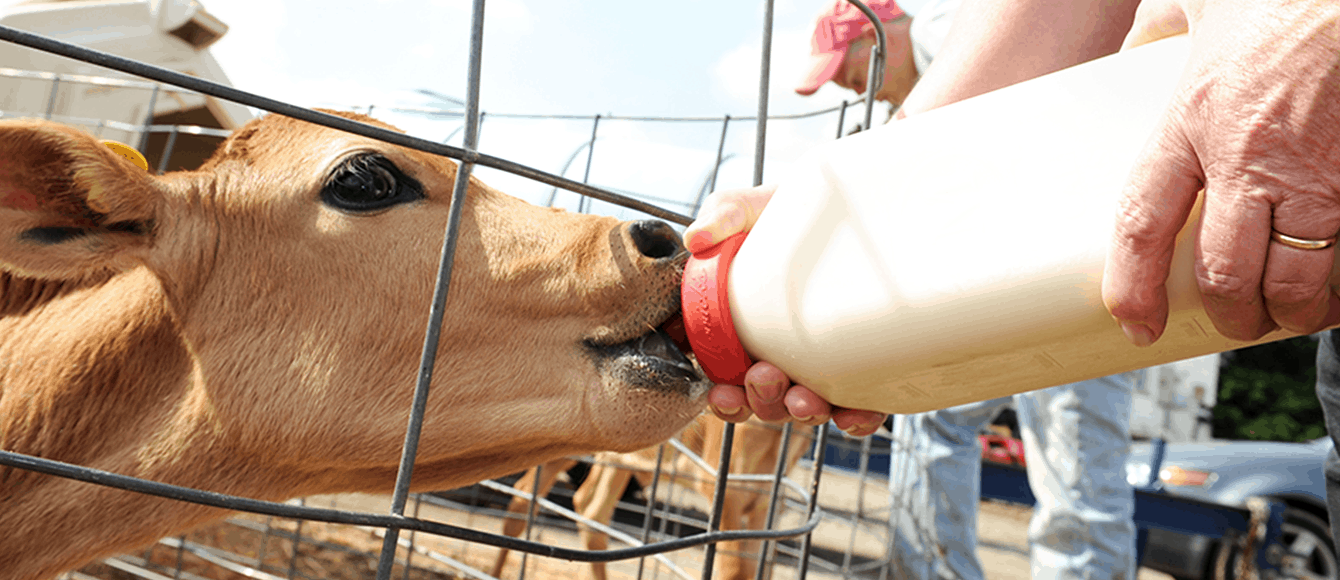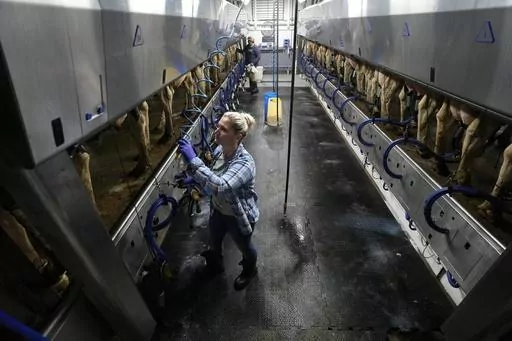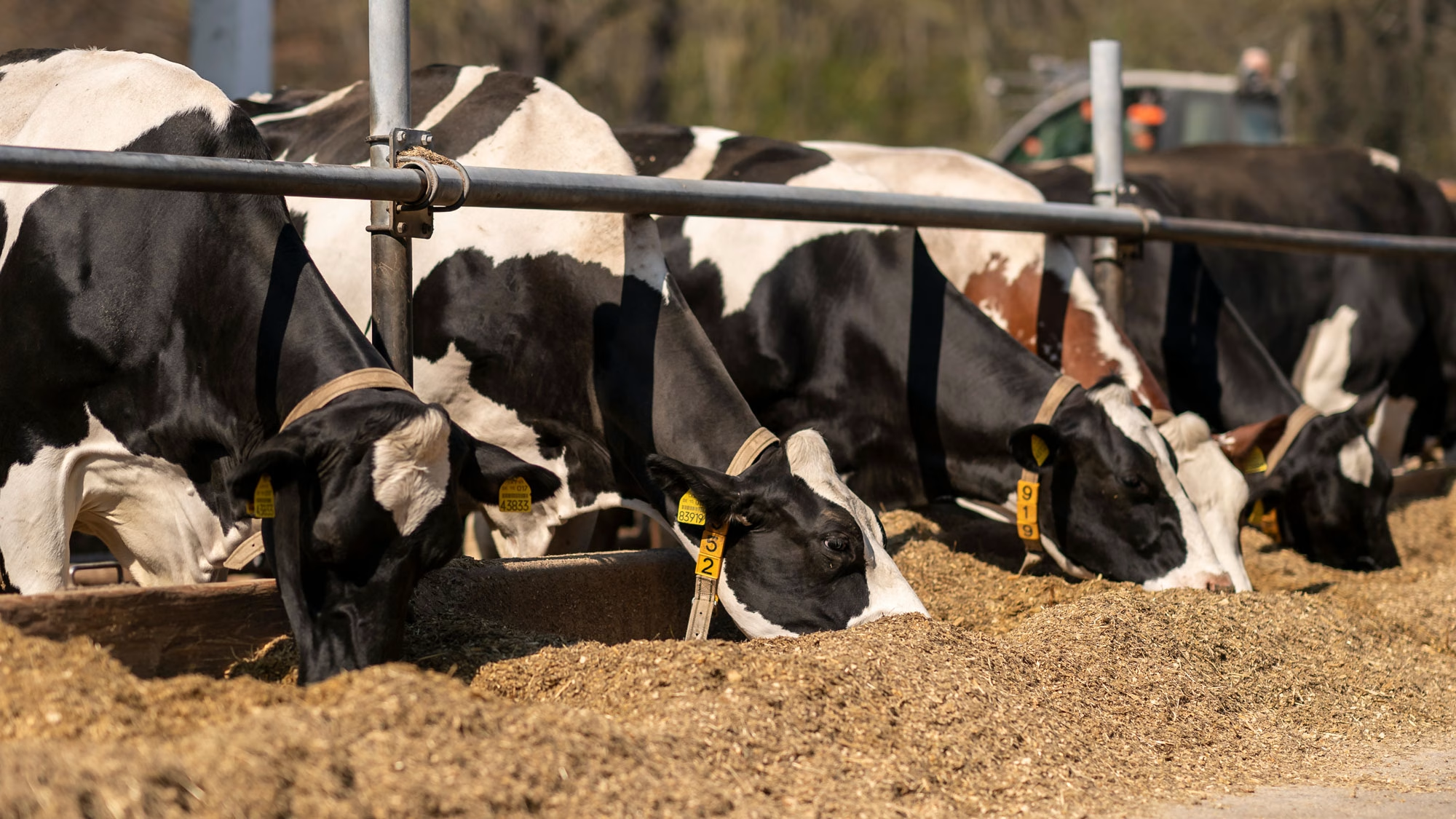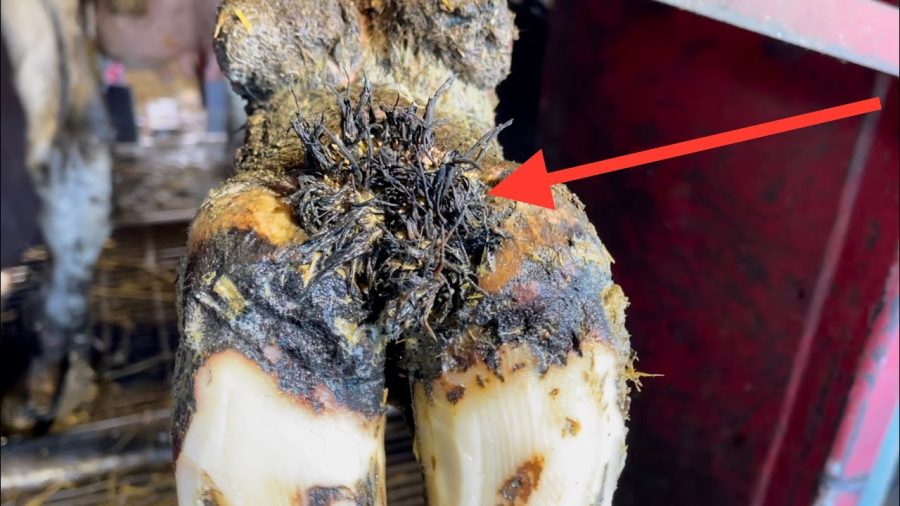Uncover the milk formula that boosts calf health and weight—looking to maximize growth and bypass postweaning slumps? Keep reading.
Summary: Are you ready to revolutionize how you rear your dairy calves? Recent studies reveal that adding milk replacer powder (MRP) to pasteurized whole milk (PWM) isn’t just a breakthrough; it’s a game-changer for calf growth and health. Calves fed with PWM + MRP for the entire preweaning period showed more significant average daily gain (ADG) and final body weight while switching back to conventional whole milk, which can result in growth slumps and lower feed intake. Improving calf nutrition early on leads to better overall health and fewer growth-related issues post-weaning. Dive into this article to uncover the transformative effects of MRP on calf nutrition, growth, and performance. It’s time to boost your herd’s productivity and health from the start!
- Adding milk replacer powder (MRP) to pasteurized whole milk (PWM) significantly boosts calves’ average daily gain (ADG) and final body weight.
- Feeding calves with PWM + MRP throughout the preweaning period enhances growth and health compared to conventional feeding methods.
- Switching from PWM + MRP to conventional whole milk at day 40 can cause growth slumps and reduced feed intake.
- Consistent feeding of PWM + MRP leads to better overall health and minimizes growth-related issues postweaning.
- Optimizing calf nutrition early translates into superior herd productivity and long-term health.

Uncover a game-changing secret for enhancing the health and development of your dairy calves. The importance of early life nutrition in dairy farming is a crucial piece of knowledge. Research suggests that the diet of your calves in their early weeks could shape their entire life. Consider a formula that claims to accelerate calf growth rates and improve overall health from day one. This isn’t just a wild idea; recent research has demonstrated the effectiveness of adding milk replacer powder (MRP) to whole milk. Adding MRP to pasteurized whole milk during preweaning could boost calf development while reducing health risks. The goal is to find the right balance and timing to maximize benefits. Intrigued? You should be. Stay tuned as we explore how this innovative feeding approach could improve dairy farming operations.
Revolutionizing Calf Nutrition: Ditch Conventional Feeds, Embrace Milk Replacer Powder
For years, dairy producers have used traditional calf-feeding practices, in which calves get limited liquid feed. This method promotes early starting meal consumption, resulting in quicker ruminal growth. Calves typically drink 8-10% of their birth body weight in liquid feed daily, which equates to around 3-6 liters. However, this strategy, while encouraging calves to begin eating solid feed, has significant drawbacks. These include slower growth rates and possibly nutritional deficits throughout early life, key stages for determining future production. It’s time to consider a new approach.
Here’s a unique method: mix milk replacer powder (MRP) with pasteurized whole milk (PWM). This innovative technique increases milk’s total solids (TS) content supplied to calves, suggesting several potential advantages. Farmers may supply better nutrition to their calves by enhancing PWM with MRP. This approach encourages rapid weight growth and improves general wellness.
Imagine feeding your calves with nutritionally superior milk during their critical early weeks. It’s not just promising; it’s a potential game-changer. Stay tuned as we delve into the outcomes and implications of this innovative feeding method!
Game-Changer for Calf Growth! Discover How Milk Replacer Powder Transformed These Calves
In a study published in the Journal of Dairy Science – “Effects of milk replacer powder added to pasteurized whole milk over different durations on dairy calves fed ground starter diet with alfalfa hay,” researchers investigated the effects of adding milk replacer powder (MRP) to pasteurized whole milk (PWM) over different durations on dairy calves’ growth and health. The 45 Holstein calves were placed into three treatment groups: the standard protocol (CONV), the short-duration MRP (SHD), and the long-duration MRP (LD). The critical variables assessed were beginning feed consumption, average daily gain (ADG), body weight, feed efficiency, and various health indices.
The CONV group followed a typical feeding program, gradually reducing milk volume. From days 10 to 41, the SHD group had MRP added to PWM, whereas the LD group received MRP from days 10 to 59.
The results revealed that calves in the LD group had a greater body weight and average daily increase than the CONV group. Starter feed consumption was initially decreased in the LD group, but it rose after weaning, balancing total intake. Health markers such as neutrophil counts and rectal temperatures showed that the LD and SHD groups had better immune function and health than the CONV group.
Why PWM + MRP is the Winning Formula for Calf Rearing
When we compare the three groups, it’s clear that calves fed PWM + MRP had significant advantages over those on conventional protocols. Here’s how it played out:
Growth Performance:
- LD calves showed superior growth, with a final BW significantly higher than the CONV group (99.0 kg vs. 92.4 kg, respectively).
- At weaning, SHD and LD calves exhibited more excellent BW than the CONV group (80.3 kg and 83.5 kg vs. 76.5 kg, respectively).
- Important skeletal growth parameters like hip height and body length were also better in MRP-fed calves. LD calves had greater hip height (95.1 cm) than CONV (92.7 cm).
“We observed that calves fed a long duration of supplemented milk replacer powder exhibited the highest growth rates and body weights,” noted the researchers.
Feed Intake:
- Starter feed intake was initially higher for CONV calves but balanced out post-weaning. SHD and LD groups picked up pace, compensating in later stages.
- Total DMIs exhibited differences, with the CONV group’s intake at 30.4 kg, notably lower than the LD (46.5 kg) and SHD (40.0 kg) groups.
Health Parameters:
- The CONV group displayed a higher neutrophil count and N/L ratio, indicating increased stress or immune challenges.
- Interestingly, cough and nasal discharge scores were lower in MRP-fed calves during the post-weaning period, suggesting better overall health.
- Rectal temperatures were also slightly higher for MRP-fed calves, potentially linked to increased metabolic activity.
- Notably, LD calves maintained higher albumin levels (3.52 g/dL) and healthier albumin: globulin ratio (2.32), indicating better overall health.
“Our data underscores that adding milk replacer powder not only promotes growth but also enhances immune status and retains overall health better,” according to the study authors.
Revolutionizing Calf Nutrition Isn’t Just a Catchy Phrase—It’s Essential for Dairy Farmers
Revolutionizing calf nutrition is more than just a catchphrase; it’s a natural and vital step forward for dairy producers. The study’s results demonstrate the significant advantages of integrating Milk Replacer Powder (MRP) into Pasteurized Whole Milk (PWM), suggesting viable approaches to calf raising. So, how does this affect your farm? Let us break it down.
- Increased Growth and Health Benefits
The research found that calves given PWM + MRP had higher growth rates and better overall health than their conventionally fed peers. With this combination, calves had larger end body weights and greater hip height. These signs demonstrate vigorous skeletal development, paving the way for highly productive adult cattle. Consider the long-term advantages to your herd’s milk production and resilience! - Addressing Starter Feed Intake Concerns
One disadvantage seen was reduced beginning feed intake during the preweaning stage among calves given the PWM + MRP combination. Don’t worry; these calves increased feed consumption after weaning, correcting for early shortfalls. A prolonged weaning period might help minimize the first drop in feed consumption. - Immune and Health Boosts
Calves fed the PWM + MRP diet had improved immunological indicators, including reduced neutrophil counts and a better neutrophil-to-lymphocyte ratio. These health advantages suggest fewer diseases and reduced medical intervention expenditures over time. It’s more than development; healthier calves need less effort and money. - Real-world application and Practical Tips
Integrating MRP into your calves’ diet might be simple. Begin by gently increasing the TS concentration in their milk, enabling them to adapt without stress. Monitor their starting meal consumption carefully and lengthen the weaning time to ensure a seamless transition. According to the research, these changes are beneficial. - Potential Limitations and Considerations
While the PWM + MRP combination has several advantages, evaluating the possible disadvantages is essential. The research found a transient increase in rectal temperatures and modest digestive alterations, most likely caused by increased TS consumption. Keeping a careful eye on your calves throughout the changeover period will help detect and manage any minor health issues early on.
Finally, realize that each farm is unique. Customize these insights to your unique arrangement while watching calf behavior and health signs. Applying these results strategically may result in healthier calves and more robust future herds.
Optimize Your Calf Feeding Strategy Today: Key Tips
- Start Early: Add MRP to PWM on day 10 of a calf’s life to ensure an early boost in nutrition.
- Adjust Concentration Carefully: Aim for a total solid (TS) concentration of 18% when mixing MRP with PWM. This Concentration has been shown to promote better growth and health.
- Determine Duration Based on Goals: For greater final body weight and fewer health issues, consider continuing the PWM + MRP mix until day 56 of age. This longer Duration provides calves with consistently enhanced nutrition.
- Transition Gradually: Around day 41, if you need to reduce costs or adjust nutrient intake, start decreasing the MRP ratio. Transition calves from PWM + MRP back to standard PWM carefully to avoid abrupt dietary changes that could impact growth and health.
- Regular Monitoring: Closely monitor starter feed intake, body weight, and health indicators. Measure and record weekly growth metrics like waist height, hip height, and heart girth.
- Health Checks: Watch for signs of respiratory issues, digestive problems, or changes in rectal temperature. Coughing, nasal discharge, and eye or ear issues could indicate health complications.
- Blood Tests: Conduct blood tests periodically to monitor glucose levels, insulin sensitivity, and immune function. This helps you make informed decisions about feeding adjustments.
- Fatigue Management: When changing feeding protocols, ensure enough time for calves to rest and digest. This minimizes stress and helps calf health.
The Bottom Line
Finally, this research demonstrates that adding milk replacer powder (MRP) to pasteurized whole milk (PWM) throughout various preweaning stages outperforms traditional feeding approaches. Calves fed with the PWM + MRP combination had higher final body weights, better health, and lower stress indicators. This secret milk formula’ provides a successful technique for efficiently and sustainably increasing calf development.
Are you ready to improve your calf-rearing habits and see the effects for yourself? Consider the possible advantages to your herd’s health and output. What may your farm accomplish with this new feeding strategy?
















